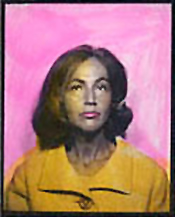A new market theory of Art, Artnet

It costs about $95,000 to rent a corporate jet to fly from Beijing to New York. I learned this from the news that a corporate executive allegedly flew star CNBC financial reporter Maria Bartiromo on that route, raising all sorts of ethical squawks in the press.
What it tells me is the true value of $100 grand at the levels of the elite: not much. So it is no surprise that increments of $100,000 are to today’s contemporary art market what $10,000 was in the 1980s and $1,000 was in the ‘60s. How have these new valuations changed the art market?
First, there’s the question of accumulation. When the wealthy patron Katherine Dreier assembled a collection of Marcel Duchamp’s pieces in the 1930s, there was no demand or value to the work at the time and her collection was regarded as a daffy eccentricity. In the 1960s, when Ethel and Robert Scull cornered the market in Pop Art, they were regarded initially as social climbers and soon after as visionaries. Their collection, when sold at auction due to their divorce, was the initial contemporary art market-maker.
During the 1980s, Charles Saatchi started to corner the market by buying up the inventory of one artist, such as Sean Scully, and then dumping the work en masse, presumably for economic gain. Now, collectors such as Daniel Loeb and Aby Rosen also assemble dozens of works by a single artist (Loeb has close to 300 Martin Kippenbergers), but they have so much money that art collecting is a game for them that mimics their larger financial speculations. Using a hedge model, these collectors are able to manipulate the valuations of their holdings based on their internal financial realities, not on any outside demand per se. That is what hedging is.
This behavior creates distinct anomalies between artists of similar styles and talents. Why are works by Marlene Dumas worth millions and those by the stylistically similar Chuck Connelly worth next to nothing? Because surplus capital in the hands of a small group of moneyed types decrees it so, by fiat. Disparities between surplus capital and "normal" market behavior (the kinds of transparent demand-based prices that you can see on Artnet, for example) create two distinct "markets." The high-end market just described is the seeking of surplus capital for true value, which lands on a work of art, because that work of art is perceived as unique, often in a highly arbitrary manner that disregards questions of esthetics and connoisseurship. The news is not that a Picasso is worth $100 million, but that $100 million is worth the Picasso!
Such distortions affect the traditional ways we think about the art market. Block discounts of an artist’s entire body of work, from a hedge perspective, turn into block appreciation: each work is worth more in a group than individually. Appreciation in value over time, such as occurred with Dreier’s Duchamps, no longer exists. As in day trading on the stock exchange, profit becomes a function of trading rather than holding. Connoisseurship yields to branding. The individual qualities of a painting by Jenny Saville matter less than the fact that the painting is by Jenny Saville.
Herd behavior by collectors at art fairs is stimulated by these new realities. Nobody wishes to strike gold, because they already have gold: what these collectors want is status and cachet and, let’s face it, more gold. Greed is good. But art suffers in this context, because it functions solely as an economic and social marker, always subject to immediate obsolescence, should economic realities change. Yes, everyone is making money, but the money is really making them. Charlie Finch for Artnet.

0 Comments:
Post a Comment
<< Home